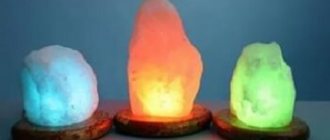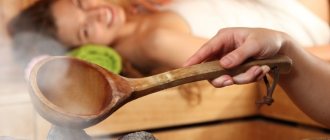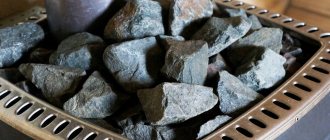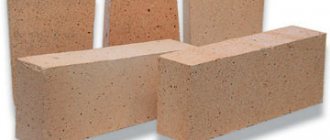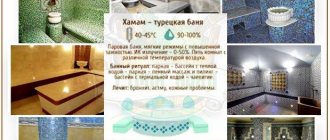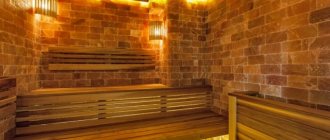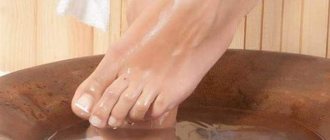For a Russian person, a bathhouse is not only a room where one can wash, it is also a place that can heal the body, restore peace of mind and good spirits. Therefore, the use of environmentally friendly and natural materials in the bathhouse fully justifies all costs.
Himalayan bath salt - how to use
Where fish splashed yesterday, dynamite explodes blocks
Lines from a famous poem from the era of widespread industrialization, in principle, correctly reflect the main milestones in the process of the birth of a salt deposit and its development. Only the fish splashed, for a minute, not yesterday, but a million years ago. And practically no one opens a salt massif with dynamite. There are other methods and other tools for this, more elegant.
Main salt extraction methods:
- Evaporation - evaporation of salt from a brine solution. This method is quite expensive in terms of energy consumption, but it allows one to obtain secondary salt with a low content of accompanying impurities. In the Russian North, the Pomors somewhat improved this method and divided it into stages. First, the brine was frozen, increasing its concentration due to the freezing of fresh water, and only then evaporated;
- Self-settling is a method of forming salt deposits as a result of the natural evaporation of sea water in a hot climate;
- Sadochny - extraction of salt sediment from the bottom of natural reservoirs - salt lakes or caves;
- A dry method for developing dewatered rock salt layers using a quarry or mine method. Salt extracted in this way is subsequently subjected exclusively to mechanical processing, grinding, sifting, fractionation, but not thermal or water treatment.
Watch the video for more details:
Kinds
Salt is the cheapest means for bathing procedures. Several types of salts can be used in a steam bath:
Himalayan
You can buy it in a specialized store for baths or saunas, in hardware or perfume departments of household stores. It enriches the body with barium and sodium, the properties increase many times when heated.
Important! There are contraindications for use: renal failure, cancer, glaucoma, tuberculosis, blood diseases.
It is a valuable mineral formed during centuries of volcanic activity and mined in the Himalayan mountains of the Punjab province of Pakistan. Salt, which contains more than 90 useful chemical elements, is extracted manually, so it is recognized as one of the most environmentally friendly substances used in everyday life.
Depending on the inclusion of iron oxide in the substance, salt is classified into 3 types: pink, red and black. Pink and red are especially popular.
In a Russian steam room or sauna, Himalayan salt can be used in the form of:
- bricks - they are used to lay out small walls in the steam room;
- tiles - cover the walls;
- pebbles (from a pea to a walnut in size) - placed on the stove and sprinkled with water to release steam;
- sand from medium and coarse salt - used to scrub the body or prepare a solution for wiping.
Stone
The usual rock table salt, which is used by every housewife for cooking. Its peculiarity lies in its fine grinding and possible mineral additives. It is necessary to monitor the composition of the substance: it should not contain fragrances or harmful chemical additives.
Marine
It is large, enriched with elements characteristic of sea water, which means it is very close to the composition of blood and therefore the use of sea salt is very useful. Effective for treating skin diseases, removes toxins, heals wounds, stimulates sweat production.
Man and salt
Rock salt, for the most part, consists of chlorine and sodium ions. Chlorine - participates in the formation of hydrochloric acid, which is the determining component of the secretion of gastric juice, sodium is responsible for the transmission of nerve impulses in the muscles, determining the degree of performance and endurance and their general functionality. Extremely important, isn't it?
It seems that no doping is needed, I ate a kilo and a half of salt at breakfast and at lunchtime I went to set another world record. However, it is not. Everything is good in moderation and salt is no exception. In modern medicine, there has been a serious discussion about what should be considered white poison: salt or sugar? It turns out that an excess of salt is a very harmful phenomenon for the human body, in all its manifestations.
For clarity, let's look at the table. It shows the chemical composition of the salt, depending on the method of its extraction, in % by weight:
| Active substance | Self-planting | Evaporation | Stone |
| Moisture | 0,2-3,3 | 2,2-2,6 | 0,2-0,9 |
| Sodium chloride | 98-99,3 | 94,8-96,0 | 98.5-98.7 |
| Calcium salts | 0,02-0,40 | 0.3-0.4 | 0.3-0.5 |
| Magnesium salts | 0,02-0,40 | 0.1-0.2 | 0.1-0.3 |
| Sulfates | 0,02-0,50 | 1,3-1,8 | 0.01-0.70 |
| Insoluble impurities | 0.1-0,4 | 0.1-0.2 | 0.1-0.2 |
Watch the video for more details:
Choosing adhesive for laying Himalayan salt blocks
Considering the uniqueness of the material, its installation is carried out in compliance with several nuances, including the selection of the adhesive base.
- Salt slabs are attached to the surface and fixed together with a specially developed two-component adhesive based on caustic magnesite. The consumption and method of preparing the mixture are indicated by the manufacturer on the packaging - to get a good result you must strictly adhere to these proportions.
- Experts advise using a mixture of magnesite and magnesium chloride in a ratio of 3:5. To do this, salt is first dissolved in warm water and only then magnesite is added. A five-centimeter layer of such a mixture dries in 4 to 6 hours, and the average consumption is 1 kg of finished glue per 1 m² of area to be treated. The main disadvantage of this method of fastening is the unattractive color of the mixture and the need to install it extremely carefully, if necessary using multi-colored tile adhesive to decorate the seams.
- Fastening to liquid glass (silicate glue) allows you to create a more attractive surface, but less durable masonry.
Himalayan salt glue
Salt glue
The easiest way to hold the salt blocks in place is to use a special Himalayan salt adhesive. It is non-toxic, odorless and provides good adhesion to all types of surfaces:
- wooden beam;
- concrete;
- plywood;
- plaster;
- brick.
Thanks to antiseptic additives, the mixture additionally protects the salt surface from pathogenic microorganisms. Glue for Himalayan salt dries quickly, so manufacturers recommend not preparing the composition in large portions and using the entire mass in 15-20 minutes. According to the release form, the dry mixture is produced in packages of 1 and 2.5 kg. The composition is suitable for work in any room, it is moisture and heat resistant, and can withstand even negative temperatures.
The salt wall is not only spectacular, but also healthy
Prices for glue for Himalayan salt
Himalayan salt glue
Salt, fire and water
We will not take bread from medical academics and determine the importance or harm of salt entering the body with food. Let's turn to such an issue as salt in the bath. Indeed, it is not easy to overdo it with introducing salt into the body in this way, but the positive effect is obvious.
Positive effects of bath procedures with salt
There are many positives, for example:
- Salt for saunas and baths creates a wonderful atmosphere when taking procedures. There is a feeling, and not a false one, that you have been to the seaside, oh well, why be modest, to the ocean coast;
- For problems of the upper respiratory tract, aeration with salt minerals gives a guaranteed and long-term effect. It is worth remembering salt rooms for asthmatics in the system of physiotherapeutic procedures in healthcare dating back to Soviet times. Some went further, for example, on the basis of the exhausted horizons of the salt mines of the Artemsol Production Association in the city of Bakhmut, salt sanatoriums were organized with a massive intake of patients in a year-round format. It is unnecessary to say that in conditions of high temperatures and humidity the effect of salt procedures increases by an order of magnitude;
- Salt is an excellent agent that suppresses pathogenic microflora. Infectious and skin diseases have direct indications for the use of salt therapy, in which rock bath salt is an inexpensive and at the same time extremely effective tool;
- Sauna salt perfectly normalizes skin and muscle tone. Moreover, the effects of elevated air temperature and salt minerals create a complex effect, complementing each other in a balanced manner;
- Even such scourges of modern man as excess weight and hypertension are corrected with the help of salt therapy. They are being corrected. There is no need to be overly optimistic in this matter. Only the comprehensive use of systemic treatment can provide a real effect. In which various activities complement and balance each other.
Characteristics and properties
Main characteristics:
- The taste is sweetish-salty. It is not like regular table salt.
- Shades - scarlet, brown, brown.
- The aroma is faint and pleasant.
- Transparency is low.
- Appearance: compressed crystal.
- The number of components contained in the composition is more than 90.
- Absorption by the body is 100%.
This substance contains the smallest amount of sodium chloride compared to other types of product.
Explosives are not used when extracting the mineral.
Application and rational use
Currently, the following methods have taken root in bathhouse culture and tradition, answering the question of bath and sauna salt, how to use it as rationally as possible and at the same time no less effectively.
Creating a salt cave effect
An old, traditional, but quite expensive method. Using monolithic salt blocks, a wall or several walls and the floor of the steam room are laid out. As a result of the active transfer of sodium and chlorine ions into the internal volume, a sufficient concentration is created for a therapeutic effect. This is a method for the lazy. No additional manipulations with salt are required. The wall works on its own and constantly.
It is worth saying that in a humid environment, a salt floor can quickly undergo destruction. However, the wall, if no mechanical stress is applied to it, is quite durable. The only condition is not to overdo it with steam. High humidity, more than 85%, licks off salt no worse than an adult moose on feeding.
It is worth saying that in addition to the therapeutic effect, there is also a visual effect. A wall made of salt blocks when using local and spot LED lighting looks gorgeous, creating a delightful atmosphere of comfort and tranquility inside. The play of light in crystals is a fascinating sight. There is only one drawback - it's expensive.
The block is by no means cheap. Laying them to create a full wall also requires certain skills and materials. For example, silicate adhesive known as liquid glass or a special two-component compound can be used as a solution for the seam. You can hang the wall directly on the supporting wooden frame.
Local use in the steam room
Salt can be integrated into a bathhouse not only as a wall, but also in the form of separate elements. Let's say, in the form of a salt hill, a dome or something similar. On the one hand, all the advantages of having a salt wall are retained, albeit in a slightly lower concentration; on the other hand, all the pleasure is much cheaper, and installation is simplified.
In addition, this option allows the use of free geometric blocks. They are more affordable in price compared to those that have regular and strict geometry. It is easier to correct an element assembled from irregularly shaped blocks, and it is rarely required. As a completely budget option, you can use bath salt in briquettes or a salt lamp.
Salty steam
The easiest way is to prepare a saline solution with a concentration of 1-1.5% and splash it on the heater. To do this, it is enough to dissolve 10-15 grams of salt in a liter of water 20-30 minutes before the procedure, stir well and leave until the crystals are completely dissolved in the water.
In principle, such a primitive method creates the necessary atmosphere in the steam room and can act as an alternative to more expensive and costly options.
Properties of Himalayan salt
Alternative medicine has long used the healing properties of salt. The sages and healers of the East believed that the miraculous composition of salt helps to cope with many ailments:
- hypertension:
- allergies;
- diseases of the skin (pimples, acne, purulent wounds, etc.);
- diseases of the respiratory tract and oral cavity;
- dysfunction of the heart muscle;
- nervous disorders and insomnia;
- diseases of the genitourinary system;
- diseases of the joints and musculoskeletal system;
- metabolic disorders.
Salt tiles in the bath
Himalayan salt tiles
Himalayan salt panel
Salt stones for baths. Health and beauty
The healing and health-improving effect is determined by the rich chemical composition - more than 85 elements were found in the structure of salt crystals, which are almost completely preserved during mining and processing. In terms of quantitative content, the most found were potassium, copper, magnesium, calcium and iron. The color of the crystals depends on the degree of saturation of the latter, which can vary from pale pink to rich. But there are also red-orange and black samples. It is thanks to its beautiful shade that tiles with Himalayan pink salt crystals are most often used as a decorative finishing material in the design of baths and saunas.
Himalayan salt
Salt tile 17cm x 36cm
Decorative salt tiles
Salt tile 3.8x20x20
Prices for Himalayan salt tiles
Himalayan salt slabs
Video – Himalayan salt
Salty greetings from the Himalayas
Himalayan bath salt is one of the latest fashion trends in modern bath culture. And this fashion trend is based on several factors:
- In the concept of the average person, the Himalayas are a kind of sacred place where truth is born.
- A very eco-friendly place, not polluted by the costs of civilization, by the way, one of the few on the planet.
- The mountain range is home to many religious and philosophical movements, as well as non-traditional types of healing. The concept of Tibetan medicine has been known to our people since the early days of dear Leonid Ilyich.
- Himalayan salt in a bath is a mineral that is balanced in composition and has excellent organoleptic properties. Naturally, if it is a natural product and not its imitation.
- Both black and pink Himalayan salt for sauna have now become more accessible both in terms of price and availability on the market.
Ways to use Himalayan mineral
Himalayan sauna salt is used in the form of salt scatterings, lamps, soap bars, and small stones (pebbles).
Most often, scattered or small stones are used in the steam room. The heaters are decorated with salt sprinkles. After receiving water, they will have the maximum healing effect on the body.
So that the sebaceous glands work less on oily skin, soap made from the Himalayan mineral is used. The salt solution improves blood circulation in the skin and promotes rapid healing of wounds. Thanks to the product, blood vessels are strengthened and oxygen supply is regulated.
Down with counterfeit
Like any other expensive product, Himalayan salt is becoming a subject of interest for unscrupulous businessmen, or rather not the salt itself, but its imitations and counterfeits. The most commonly used technique is when pink-colored rock salts from other deposits are passed off as Himalayan salt.
There have also previously been cases of attempts to color white rock salt pink using a variety of dyes, ranging from potassium permanganate to food pigments. It is possible to identify a fake in the following fairly simple ways:
- Scrape the surface with any sharp object, the salt mass should be evenly colored throughout its entire depth;
- Dissolve a small amount of salt in a glass of water. Visual separation and tinting of the water column, the formation of obvious sediment, and the formation of stable suspension are not allowed;
- Gently moisten a teaspoon of pink salt with a small amount of water, preferably from a spray bottle; Pakistani salt will immediately react by darkening several tones.
Of course, there are other ways to determine the quality and originality of a product, however, it is not our task to organize an educational program for potential scammers and arm them with additional knowledge on their slippery path.
Technology of using salt in steam rooms
Crystals of the mineral are pink in size, approximately 2-3 cm in size. Salt bricks, pebbles, tiles or blocks are used to build a bathhouse or sauna. Brick is considered a more expensive but reliable material. Pebbles are large loose salt crumbs. It is laid out on hot stones in the steam room of a sauna or bathhouse and watered with water - this is how it is most effective and useful.
Salt bricks are also used for laying floors. The antiseptic properties of this natural medicine allow you to stay indoors without slippers. The mineral improves and nourishes the skin on the feet. A sauna with Himalayan salt can be compared to relaxing on the ocean or sea coast. The air and climate are identical to those that attract us to southern resorts.
With normal humidity, a mineral such as Himalayan salt can exist forever. If you use this material to build a sauna, it is important that the humidity in the room does not exceed 53%. But if this figure rises for a short time, it’s not scary. Therefore, the substance can be used in saunas without fear. And after the bath, the room needs to be wiped and ventilated to reduce the humidity level. It is also recommended to install a ventilation system. Return to content
